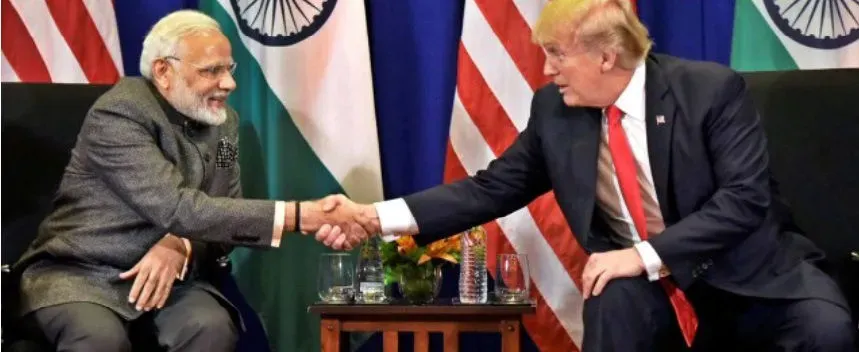Context:
Recently, NITI Aayog CEO BVR Subrahmanyam has advocated that India should join both the Regional Comprehensive Economic Partnership (RCEP) and the Comprehensive and Progressive Agreement for Trans-Pacific Partnership (CPTPP).
News Details
- MSME Benefits: BVR Subrahmanyam emphasized that joining these agreements would particularly benefit India’s MSME sector, which contributes to 40% of India’s exports.
- Global Supply Chain: The CEO highlighted the importance of joining global value supply chains, noting that 70% of world trade occurs through these networks.
- Missed Opportunities: Subrahmanyam pointed out that India has not fully capitalized on the ‘China plus one’ opportunity, while countries like Vietnam and Indonesia have gained more advantages.
About The Comprehensive and Progressive Agreement for Trans-Pacific Partnership (CPTPP)

- Current Membership: The agreement includes eleven member nations viz. Australia, Brunei, Canada, Chile, Japan, Malaysia, Mexico, New Zealand, Peru, Singapore, and Vietnam.
- Economic Significance: CPTPP members represent 13.4% of global GDP, approximately US$13.5 trillion, making it one of the world’s largest free trade areas.
- Historical Evolution: The agreement evolved to CPTPP from the Trans-Pacific Partnership (TPP) in 2018 after the United States withdrew, with Japan taking a leading role in its revival.
- Key Provisions: The agreement includes detailed standards for intellectual property protection and specific regulations for state-owned enterprises.
- E-commerce Framework: CPTPP mandates consumer protection laws and promotes cross-border e-commerce among member nations.
Implications of India joining CPTPP
- Market Access: Membership would provide India preferential access to a market covering 13.4% of global GDP.
- Export Opportunities: Indian MSMEs would gain enhanced export opportunities through reduced tariffs and standardized trade procedures.
- Manufacturing Boost: Integration into global supply chains could strengthen India’s manufacturing sector and attract foreign investment.
- Competitive Challenge: Indian industries would face increased competition from efficient producers in member countries, necessitating modernization.
- Economic Reform: Joining would require significant domestic reforms in areas such as intellectual property rights and e-commerce regulations.
About Regional Comprehensive Economic Partnership (RCEP)

- Membership Scale: It was formed in 2020, RCEP includes 15 member countries, representing about 30% of the world population and global GDP.
- Geographic Scope: The agreement covers Asia-Pacific nations, including major economies such as China, Japan, South Korea, and Australia.
- Trade Benefits: The pact aims to eliminate 90% of tariffs on imports between signatories within 20 years.
- Economic Integration: RCEP facilitates deeper economic integration among diverse economies, from high-income to developing nations.
- India’s Status: India took part in the initial negotiations but later decided to opt-out.
India’s Reason for Opting Out
- China Plus One Strategy: Primary concerns included fears of an influx of Chinese goods into the Indian market, affecting local industries. This led to an increase in the trade deficit with China.
- Impact on Domestic Sectors: MSMEs and some agriculture sectors will face increased competition from international imports, potentially affecting their viability.
- Easy geopolitical Impact on the economy: Increased reliance on trade agreements may expose India to external economic fluctuations, particularly if global demand/geopolitical tensions shift. Therefore, it will impact trade dynamics within these blocs.
Benefits of joining RCEP
Boosting Exports: RCEP will help India to access larger markets, particularly in the Asia-Pacific region. This will increase exports, especially for the MSME sector.
Promote IPR: RCEP promotes intellectual property rights (IPRs) and technology exchange and fosters advanced technologies with developed countries such as Japan and South Korea.
Integration into Global Supply Chains: It would facilitate India’s integration into global supply chains which will benefit from the ‘China Plus One Strategy’.
- Many countries are shifting their supply sources from China. Therefore, RCEP will enhance India’s manufacturing sector and attract foreign investment.
Economic Growth: The World Banks’s India Development Report highlighted that by joining RCEP, India could increase trade, foreign investment, and economic growth.
Future Outlook
- Global Position: India’s participation in these agreements could strengthen its position in global trade negotiations.
- Economic Growth: Membership could accelerate India’s economic growth through increased trade and investment.
- Reform Catalyst: Joining these agreements could drive necessary domestic economic reforms.
- Strategic Balance: Participation would help India maintain strategic balance in the Indo-Pacific region.
- Competitive Edge: Membership would force Indian industries to become more competitive and efficient.

